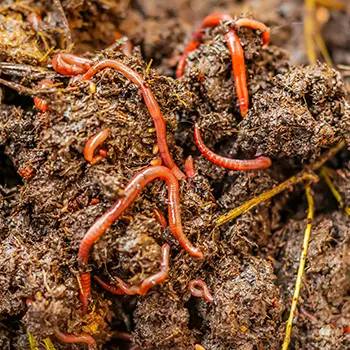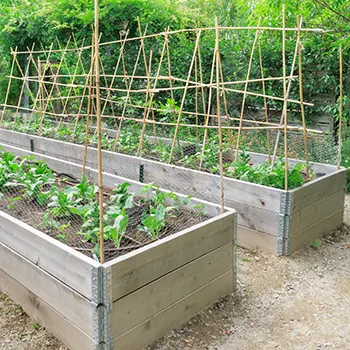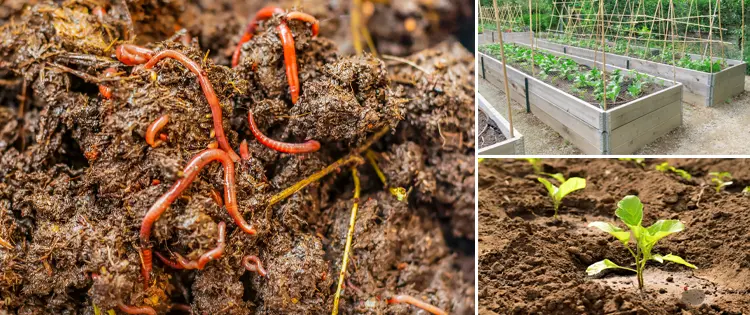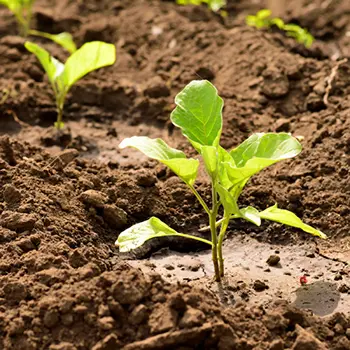Owning a healthy and ever-growing garden needs a perfect soil type. And loamy soil is an excellent type of soil for all the garden needs. It contains a suitable mixture of nutrients, minerals, microorganisms, and other organic matters. Also, this type of soil is well aerated and promotes proper soil minerals, nutrients, particles, and water flows.
But the other two major soil types, sandy and clay soil, can create problems for a gardener, especially for a beginner. Sandy soil is more porous, whereas clay soil is denser and resists air and water movements. Although, both soils are very beneficial to several plant varieties.
It might not always be possible to find a home with the ideal soil type for your garden. But there is a lot that can be done to enhance your garden soil and make your garden look too charming.
How to Improve Clay Soil
Clay soil’s particles are small and packed tightly, making it heavy but nutrient-rich. This enables good plant growth after its improvement. So, for that, we are going to change its texture to make it lose and separate easily from its particles. This would provide good space for plant roots to spread and proper airflow.
Following are the steps to enhance the clay soil:
1) Adding Organic Matter:
First, we will add organic matter like composted or half composted wood chips, leaves, straws, mold, and manure. The best season to do this is the fall. And for better plant growth it should be done every year.
Before beginning this step, you need to make sure that the soil is not overwatered or too dry, it should be optimal wet. This will make it easy for you to handle it. Otherwise, you will not be able to work with it.
What we need to do first is to dig about 3-5 inches deep into the clay soil with the help of a shovel or any other tool. Then, gradually add the organic matter and mix it.
This will help to provide the soil with more nutrients and minerals. And it will make air pockets in the soil for plants to spread their roots and grow well. Also, the organic matter will serve as food for the worms.
2) Aeration:
After that, we need to add the vermicompost, you can skip this if it is already added to the compost. Worms help to loosen the soil and convert the organic matter into compost. It improves soil structure and aeration through its movements in the soil.
structure and aeration through its movements in the soil.
Along with this, manual aeration using a digging fork can be done to facilitate the process. This step can be repeated on a regular basis or when required. Most often, it should be done when you feel like the topsoil is clogging and no water movement occurs.
You can also try to manually remove the water with the help of a small container if over-draining happens. Also, over-spading should be prevented.
Most importantly, never try to add sand into the clay soil. This will not improve the soil structure but it will worsen the soil and it will result in something like concrete. And it might become tougher for you to handle it.
3) Raised beds:
Thirdly, raised beds can be very beneficial for improving clay soil. The water clogs in the clay soil and compacts easily. And then this approach will help to drain the excess water easily and help to improve the soil texture along with the organic matter over time.
Also, clay soil should not be watered more than once a week. After some time watering can be done as per the requirements because then it will no longer remain a normal clay soil. Either it will be completely changed or it will become something like loamy clay soil.
Along with this add a cover to your soil bed to prevent it from overwatering due to the rain. This step becomes more important when you live in over-moist or in rainy weather. This way you would not be required to add water more frequently and it will save the soil from rains, hence saving your hard work.
How to Improve Sandy Soil:
On the other hand, sandy soil contains large soil particles which makes it more permeable. This makes it a little more likely to be not chosen over the clay soil because of its lower nutrient and water holding capacities.
To make sandy soil suitable, follow the steps below:
1) Organic matter:
The first step of adding the organic matter is the same as for the clay soil. But for sandy soil, we need to add some mulch or hay over the soil for keeping it water locked and preventing the water from evaporating. Grass clippings, green moss, and other dried plant residues can also be used for this step.
2) Irrigation:
Since sandy soil does not retain water, it heats up quickly and loses its nutrients. Hence, it is required to be watered more frequently as compared to other soil types. But this might not be possible for you to do this several times a day, especially in the summer months.
Therefore, you can use the drip irrigation system for watering plants in sandy soil. This will always keep the soil moist and cool. And hence, good plant growth will appear.
Also, you may try to create a greenhouse for this soil type. This will prevent the soil from heating and help it retain water and nutrients.
3) Cover crops:
Sandy soil is having the lowest nutrient and mineral composition in comparison to other soils. Therefore, adding organic matter will help it to regain its power. But for making this process fast, we can add some cover crops like buckwheat or crimson clover. This will improve soil fertility and hence improve the overall soil structure and health.
Best Plants for Clay/Sandy Soil:
With all the soil improvement methods discussed above, sandy and clay soil will become very suitable for all plant types. But there are several plants that love these types of soils.
Following are the plants, veggies, and flowers that can be planted in the clay or sandy soil:
1) Best Plants for Clay soil:
- Herbs like mint, sage, fennel, and parsley.
- Flowers such as roses, aster, butterfly weed, daylily, iris, and New York ironweed.
- Veggies include chard, cabbage, peas, cauliflower, and lettuce.
2) Best Plants for Sandy Soil:
- Herbs such as lavender, oregano, thyme, and rosemary.
- Flowers like hibiscus, cleome, yarrow, and California poppy.
- Tomatoes, collard greens, corn, pepper, strawberry, squash, and zucchini.
- Root veggies like carrot, beetroot, radish, potatoes or sweet potatoes, onion, garlic, and ginger.
With all the procedures that we have discussed above, you will be able to completely transform your garden into a beautiful perennial garden.
Also, you need to be patient with the results because the soil improvements will be seen in the long term and can take time from some months to a couple of years too, depending on the accurate soil type and the way you follow the methods.
I hope that your soil transformation journey will go smoothly and you will get the required results sooner.
You may also like:
Stop Using THIS: It’s Ruining Your Compost
The Most Powerful Medicinal Plants You Should Have When SHTF (Video)









